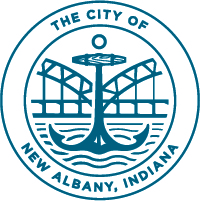Net Neutrality Needs Your Help
/Tomorrow, the Federal Communications Commission (FCC) plans to vote on removing Net Neutrality protections that govern how Internet Service Providers (ISP) allow people access to the internet.
“I urge you to take steps to protect your privacy, protect your access to information, and protect your right to start an internet business,” stated Mayor Jeff Gahan. “Net Neutrality protects these rights for all small businesses and residents. Contact your elected officials for help. Ask them to keep the internet fair for every person, rich or poor, and every business, small or large. Ask your representatives to preserve Net Neutrality today to keep our cities growing and our residents informed.”
What is Net Neutrality?
Net Neutrality is the set of rules that dictate that all traffic on the internet should be treated fairly. It states that no Internet Service Provider can favor and speed up or slow down (or block!) access to any website or internet service. Net Neutrality, put simply, is the bedrock principle of a free and open internet.
What could happen if Net Neutrality goes away?
1. Stifled Economic Growth and Damage to Small Businesses
Without these protections, ISPs could slow down access to a competing startup’s website, stifling economic growth and hurting small businesses. Even large companies could be affected by this – for example, Netflix provides a competing service to many ISPs who provide cable television service. With Net Neutrality rules removed, those ISPs could slow down or even block access to Netflix, or charge you a “premium” fee for access to that content.
2. Invasion of Privacy by ISPs
In April of this year, a Congressional resolution passed that repeals rules requiring ISPs to receive permission from customers in order to collect and/or sell information about your online habits.
Current laws restrict ISPs from how and when they collect customer information, including browsing habits and the ability to build a “profile” of a user’s online habits or activities. By removing Net Neutrality and rolling back certain rules and protections, the FCC could fully un-restrict ISPs ability to collect, use, and sell your data to third parties without your permission.
3. Increased Costs for Consumers
Currently, with Net Neutrality in place, customers pay one price (your monthly bill) for access to the entire internet. Without Net Neutrality, ISPs could portion out the internet into “packages.” For example, if you wanted access to your social media sites, ISPs would have the ability to charge you an additional fee per month for their “social media” package, which would then allow you to access those websites.
How to Contact your Elected Representatives:
Trey Hollingsworth – US House of Representatives
1641 Longworth House Office Building
Washington, D.C. 20515
Phone: 202-225-5315
Joe Donnelly – US Senator
720 Hart Senate Office Building
Washington, D.C. 20510
Phone: 202-224-4814
Todd Young – US Senator
400 Russell Senate Office Building
Washington, D.C. 20510
Phone: 202-224-5623
How to Contact your Business Representatives
Local Chamber of Commerce – One Southern Indiana
4100 Charlestown Road
New Albany, IN 47150
Phone: 812-945-0266
Louisville Chamber of Commerce – Greater Louisville Inc. (GLI)
614 W. Main Street
Louisville, KY 40202
Phone: 502-625-0000





